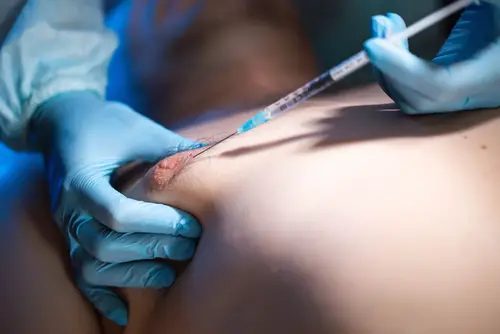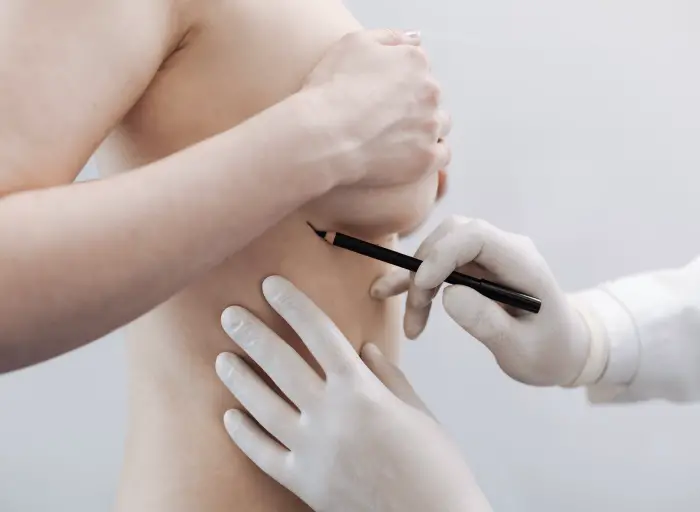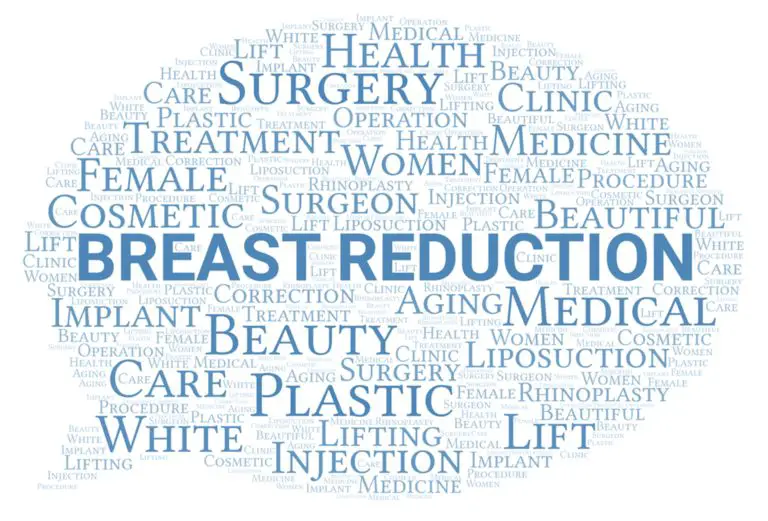In some cases, Medicaid will pay for breast reduction surgery. However, in order for Medicaid to approve your procedure, It needs to be justified as medically required by a licensed healthcare professional. Your breast reduction must therefore be medically necessary.
Table of contents
- Will Medicaid cover Breast Reduction?
- How Do You Get Medicaid Breast Reduction Coverage?
- Which Medicaid Breast Reduction Procedures Does Medicaid Pay for?
- Mastectomy for Male Gynecomastia
- Mammoplasty for reducing
- Preventive mastectomy
- Surgery for Breast Reconstruction
- What to Expect After a Breast Reduction Procedure?
- The Procedure Before
- When Having A Breast Reduction
- After The Breast Reduction Procedure
- Final Words on Medicaid covered breast reduction surgery
Will Medicaid cover Breast Reduction?
To begin with, if you want a breast reduction for cosmetic reasons, Medicaid will not pay, and you will have to pay the entire bill yourself. Medicaid may occasionally advise you to try alternative treatments such as physical therapy and weight loss. However, if you have medical records documenting chronic neck and back pain, Medicaid will begin surgery preauthorization.
Like other insurance companies, Medicaid requires a 500-gram reduction in each breast.
Although Medicaid plans to cover your breast reduction surgery, due to Medicaid’s low reimbursement rates, you may have difficulty finding a surgeon to perform the procedure.
How Do You Get Medicaid Breast Reduction Coverage?
To receive a breast reduction, you must meet other Medicaid requirements. Your doctor will need to confirm the following:
1. Non-surgical procedures have not been effective for you.
2. You’ve had your symptoms for at least six months.
3. The procedure is required to relieve your pain.
To receive full benefits, your breast reduction procedure must be performed in a Medicaid-approved facility.
Before your first appointment, ask the doctor if they accept Medicaid. You can also look for Medicaid-approved doctors online.
Which Medicaid Breast Reduction Procedures Does Medicaid Pay for?
Mastectomy for Male Gynecomastia

Male adults who have gynecomastia may undergo a mastectomy to remove their breast tissue. Male mammary glands swell too much, which leads to male gynecomastia.
Medicaid will pay for a male patient’s mastectomy if the following criteria are satisfied:
1. If the adult receiver has a history of gynecomastia that persists after pathological explanations have been ruled out for more than three months.
2. Pathological causes of the adolescent recipient’s gynecomastia have been ruled out, but the condition has persisted for over six months.
3. A mammogram reveals that the extra tissue is glandular and not fatty.
4. If the excessive tissue development is not the result of uninsured procedures, unapproved medications, alcohol usage, or abusing illegal substances like anabolic steroids, marijuana, or other narcotics.
Mammoplasty for reducing
When there is a hereditary defect or significant female breast tissue loss in the contralateral breast due to trauma, Medicaid will pay for reduced mammoplasty.
Additionally, if the surgery is deemed medically necessary because of the increased risk of cancer or cancer itself, it will be funded.
Preventive mastectomy
A prophylactic mastectomy removes the mammary glands of those who are thought to have a high risk of acquiring or redeveloping breast cancer to stop the formation of malignant cells.
If the criteria below are satisfied, Medicaid will cover prophylactic mastectomy:
1. If the recipient has had breast cancer in the past.
2. The recipient is at significant risk of developing breast cancer if a breast biopsy is positive.
Surgery for Breast Reconstruction

Following a mastectomy, breast reconstruction surgery is performed to restore equilibrium with the contralateral breast.
The surgical fabrication of a new breast mound and the reconstruction of the nipples are both included in breast reconstructive surgery.
If a doctor determines that Medicaid should cover the cost of breast reconstruction surgery for the afflicted breast, Medicaid will do so.
The doctor is required to present proof, including images, that a patient has suffered a serious deformity as a result of trauma, illness, or surgical problems.
What to Expect After a Breast Reduction Procedure?
The Procedure Before
Most likely, multiple tests will be required to prepare for breast reduction.
You might also require an ultrasound or mammography, and your doctor will need to conduct a normal breast exam.
These tests will allow the doctor to determine whether you should get a breast reduction and whether you are in good enough health to do so.
Inquiries concerning your own and your family’s medical histories will also be made by your doctor. Again, when answering these questions, you must be sincere.
There are still a few measures to do after the doctor has given you the go-ahead for surgery, including:
1. A few days prior to the operation, stop using prescription medications.
2. If you smoke frequently, give it up.
3. Eat and drink in moderation on the day of operation.
When Having A Breast Reduction
During surgery, the skin, fat, and tissue in your breasts will be pieced back together to get the ideal results. Either an inpatient or an outpatient procedure could be performed.
The majority of patients who have breast reduction surgery are under general anesthesia.
After The Breast Reduction Procedure

1. Your breasts will be covered in bandages, and you might have drainage tubes attached to them. These tubes are meant to drain fluids and reduce any swelling.
2. You’ll have to retain the bandages and tubes for a couple of days. Once the bandages are removed, you will have to wear post-surgical bras for several weeks.
3. You can expect to be off work for a week or two so that you can rest and recover. Most people experience pain and fatigue after breast reduction surgery, making it hard to attend to other duties such as work.
4. Your physician will prescribe some drugs to help manage the pain. Your physician will also advise you on when you can get back to work and activities such as lifting.
Final Words on Medicaid covered breast reduction surgery
In conclusion, Medicaid will cover your breast reduction treatment provided the requirements indicated above are satisfied.
Keep in mind, though, that cosmetic breast reduction treatments are not covered by Medicaid.
Additionally, depending on your Medicaid plan and the location of your breast reduction treatment, you could have to pay some out-of-pocket expenses. Contact Texas Medicaid and CHIP for more information.
